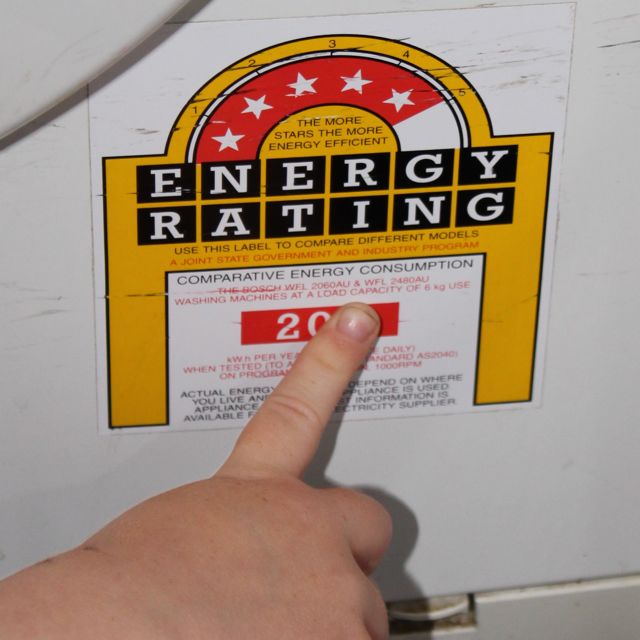How do you choose an appliance that is going to be cheap to run because we don't want to be lumped with a machine that is cheap to buy but a monster to run.
If i was to make a sweeping statement I would say that the cheaper it is, the more it is going to cost you to operate.
The star rating system for energy and water use of appliances works well and gives you a pretty good indication of how energy and water efficient this appliances are. To compare electrical products that are energy rated this Australian Government energy rating website is a great tool.
The easiest appliances to compare are fridges. A fridge is switched on 24 hours a day, 365 days a year. It has a fairly predictable energy use that is only varied by a few things:
- people using it as a form of meditation as they stare into the coolth
- putting hot foods directly inside
- not having good air circulation around the fridge
- having the fridge next to the oven or in a hot-spot.
- a leaky door seal
Apart from these the fridge runs pretty much as predicted on the energy rating label.
Going for the appliance with the highest star rating you can afford is a good start but how do you compare appliances of the same star rating?
Here is my clever calculation for this.
- Look at the energy use/year (from the energy rating sticker or from the website)
- Cover up the zero
- Multiply this number by 2*
- This is what this appliance will cost you to run each year.

For other appliances that use different amounts of energy depending on what setting, how often etc eg washing mashines, you will need to look closely at what they are rated to do.
* Only 5 years ago, this formula was a direct one to one. Cover up the zero and this would give you the cost of that appliance to run/year. The price of electrickery has gone up and it will keep on heading that way so when you buy a new appliance, get one that doesn't use too much electricity, the extra cost to buy it will be offset by the lower energy use.